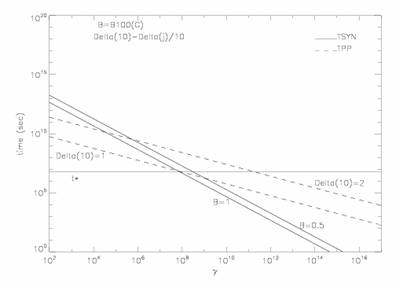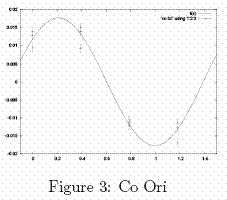
I have great research interest in field of High Energy Astrophysics, Observational Cosmology, Numerical Simulations and Stellar Astrophysics specially premain squence stars like T Tauri's . Some of my projects are listed below with abstact and results.
High Energy Astrophysics
Title : TeV blazars jets: hadronic or leptonic jets?
Supervisor:Prof. Prasad Subramanian,IIA,Bangalore.
Abstract
The recent very high energy gamma ray (TeV) observation of some near by blazar shows the very rapid variability in minute scale. These time scales are one or two order of magnitude shorter than the shortest timescale expected at the black hole horizon ,by light crossing time scale argument. Therefore, the observed variability in TeV gamma rays suggesting that this variability involves enhanced emission in a small region within an outflowing jet and it may be originated in jet itself if all the photons are emitted coherently .In this project we have tried to put some constraint on the jet composition models (Leptonic or Hadronic) by using the rapid variability data and the cooling time scale for each mechanism.

Plot of timescales and Lorentz factor for Proton synchrotron and Photo -pion processes and the minimum variability time which is t~20 min for this plot.
- - - - lines are showing the cooling timescale of photomeson process for 1 TeV photon with Doper factor δj ~10 and ~20.
........lines are showing the cooling timescale of proton synchrotron process .
____lines are showing the minimum variability time which is t ~20 min in observer frame.
Proton synchrotron
Even though proton synchrotron radiation becomes an effective mechanism of gamma ray radiation with characteristic cooling time ,only in a strong magnetic field like 100 G for gamma less then 10^10 .
Photo -pion processes
Our calculation of cooling timescales suggest that Photo -pion processes is most likely the favourite machanism because for 1 TeV photon cooling timescale is most of the time is more than the flare timescale .
* To know more about my this project ....CLICK HERE
--------------------------------------------------------------------------------------------------------------------------------------------------------
Stellar Astrophysics
Title: Photo polarimetric variation of T Tauri stars
Supervisor: Prof. A. N. Ramaprakash, IUCAA, Pune.
Abstract
We made first time simultaneous photo-polarimetric observation in R band using IMPOL (An Imaging polarimeter) at 2.34 meter VBT (Vainu Bappu Telescope), IIA (Indian Institute of Astrophysics), Kavalur. The data analysis was done by IRAF (Image Reduction and Analysis Facility) at IUCAA and by the curve fitting techniques we fitted data points and found significant linear polarization approximately 0.9 to 1.8 % that confirms the disk like configuration around these T Tauri stars.
Co Ori
Oudmaijer (2001) found a gradual decrease in brightness over five days in October 1998 but very slight change in degree of polarization, from 2.4 to 2.6 % in I band. We also found degree of linear polarization 1.77 % in R band.

To know more about my this project ....CLICK HERE
--------------------------------------------------------------------------------------------------------------------------------------------------------
Numerical Simulations(Adaptive Optics)
Title: Development of algorithms for wave-front reconstruction from defocused images .
Supervisor: Prof. A. N. Ramaprakash, IUCAA, Pune.
Abstract
In this paper we are introducing a new closed loop wavefront reconstruction technique. This technique works in the geometrical optics regime and relies on long exposure for averaging out of the effects of atmospheric turbulence. Best result is obtained with a large amount of defocus, well outside, the so called caustic zone. In this regime, intensity variation over the extra focal image essentially reflect local change in the wavefront total curvature (Laplacian).The defocused images contain information about both wavefront Laplacian and the wavefront radial tilt at the edges and we can reconstruct the wavefront surface by solving Poisson equation numerically, using edge tilt as a Neumann type boundary condition . In this paper we are describing a very new algorithm for wave front reconstruction. This algorithm contains mainly two steps to reconstruct the wavefront.
- Construction of artificial images..
- Least square fitting of Zernike polynomial.

Image of the Least square fitting of Zernike polynomial for Spherical aberration
To know more about my this project ....CLICK HERE